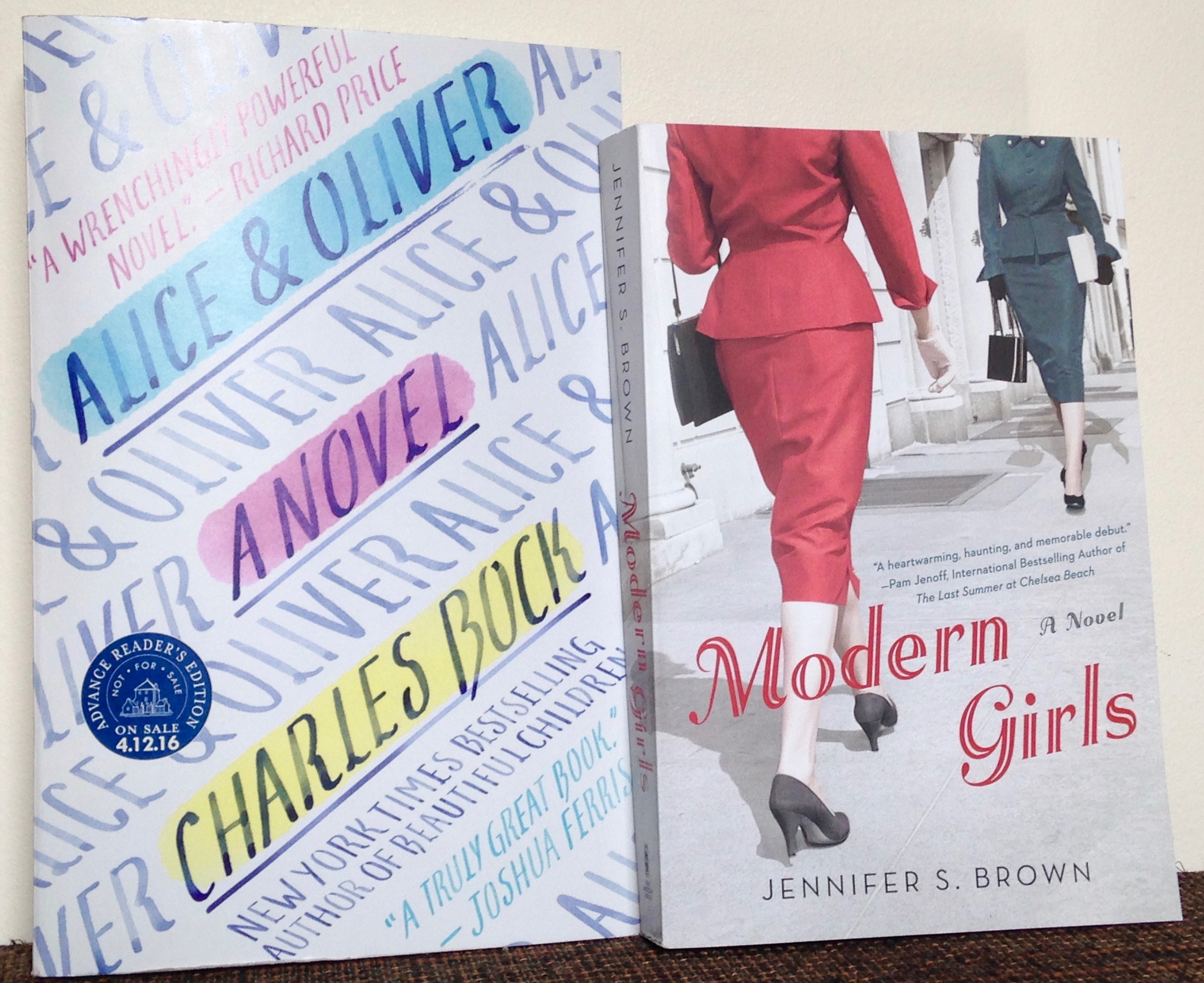 My reviews of the two novels appear in New York Journal of Books. Read those reviews first, and then go to the next paragraph to read my additional remarks that appeared in an article in a different and now defunct publication comparing the two novels that were published the same week.
My reviews of the two novels appear in New York Journal of Books. Read those reviews first, and then go to the next paragraph to read my additional remarks that appeared in an article in a different and now defunct publication comparing the two novels that were published the same week.At first glance two historical novels published last week have little in common. Where Charles Bock’s second novel Alice and Oliver is a starkly realistic and unflinching portrait of a marriage undergoing trial by health crisis in 1990s New York, Jennifer S. Brown’s debut novel Modern Girls , on the other hand, is a warm, heimisheh tale of two generations of women in a Jewish immigrant family on Manhattan’s Lower East Side in the 1930s whose opportunities and choices were limited by their gender.
In my New York Journal of Books review of Alice and Oliver I describe how the novel “relates the physical and emotional toll cancer treatment takes on the patient, the spouse, their marriage, and how they face mortality.” My NYJB review ofModern Girls predicts readers will become “emotionally invested in Rose and Dottie Krasinsky, the novel’s Yiddish speaking immigrant mother and American born adult daughter characters who find themselves unexpectedly pregnant and who share the first person narration in alternating chapters whose action occurs over two months from July to September 1935.”
Though differing in tone, both novels portray Manhattan in earlier eras. Here is how Bock renders Manhattan during Alice and Oliver’s student days in the 1980s:
“During that most indulgent stretch of the eighties, in the wee hours of those wild nights; back when stockbrokers and club freaks had finished their cross-cultural tangles on the various dance floors of Limelight, or had tired of dry humping in the most impenetrable crannies of Tunnel, or had chopped out their final lines on Nell’s glossy tables; after the go-go boys of the Paradise Garage, the strippers from Billy’s Topless, the bears at Mineshaft, and drag queens of Jackie 60, to say nothing of the dominatrices from all those converted basements, and the chicks with dicks who were hooking tricks on Little West Twelfth, once all those beautiful and their damneds had finished crawling through the darkness, done with their respective hobbies, predilections, and transgressions; when they were still strung out, still jittery, and needed a place to calm down, somewhere to hash out all those loose ends, relive the night, perform some more, or just grab some decaf, accepted wisdom—among those who knew—had it that no matter where you’d been, no matter whom on the West Side you might have done, someone else from your particular locale of debauchery would have made their way toward that street of deep grooves and broken cobble-stones. The aquamarine-blue metal panels from a different era.”
If that decadent portrait makes you yearn for a more innocent time, try out Brown’s description of the Lower East Side in 1935 in the voice of Rose Krasinsky:
“The avenue was busy, with hawkers and carts and children playing in the streets and women bustling about, doing their shopping, pausing to gossip with friends. On one stoop, boys were shooting craps, yelling loudly as they rolled the dice, arguing over who owed what to whom. The scene was exactly like the one on my street, but here it had an ominous overtone, as I knew what else lived on this street.”
I conclude my NYJB review of Bock’s novel by noting that “Alice and Oliver is not appropriate material for a Lifetime or Hallmark movie. But as unsentimental realist fiction at its starkest it would make a raw, gritty HBO miniseries, and is strongly recommended to fearless, emotionally resilient readers who enjoy well-crafted prose.”
I could picture Modern Girls, on the other hand, as a Lifetime movie, though it is definitely not suitable for Hallmark. I conclude my NYJB review by praising Brown’s novel whose “simple, direct prose is accessible and notwithstanding its frank depiction of sexual desire traverses both the young adult and the adult historical fiction genres. Its suspenseful plot and warm emotional tone should appeal to a wide audience.” For fuller discussions of the two novels see my reviews in New York Journal of Books.
No comments:
Post a Comment